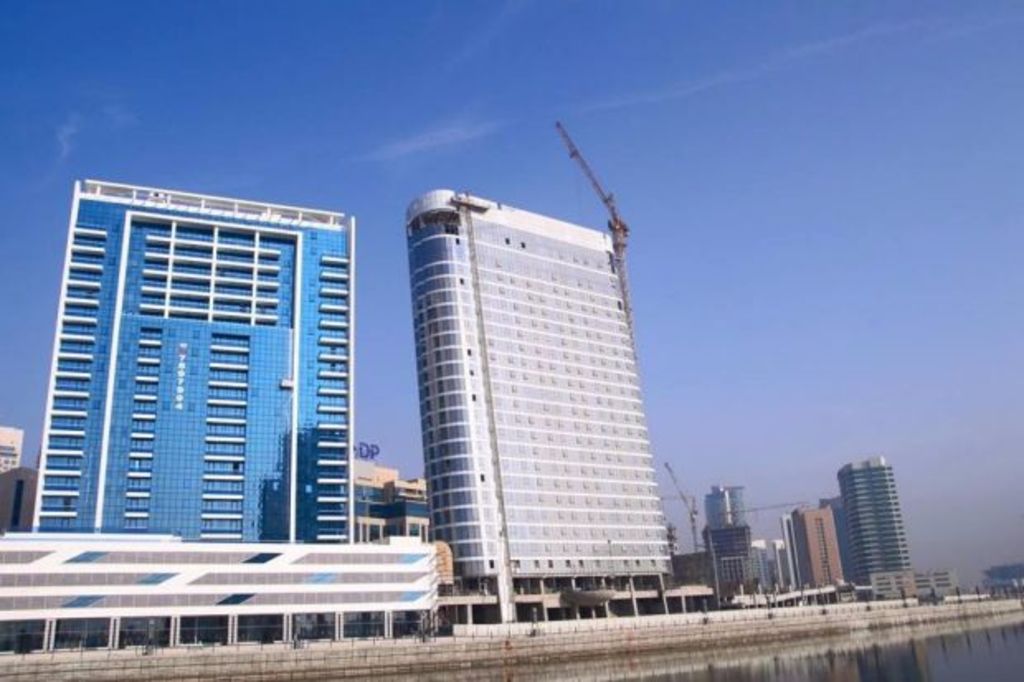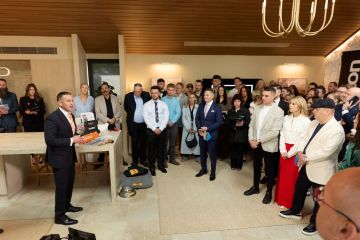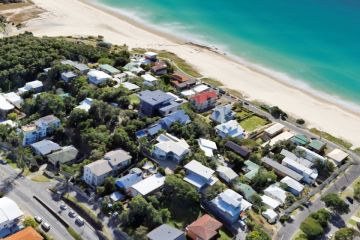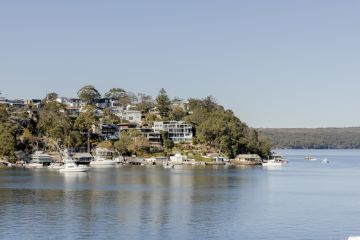iPod-inspired Dubai apartment block nearing completion

Under construction for more than 10 years, a Dubai building designed to resemble a second-generation iPod nano in a docking station – tilted at 6.5 degrees – is finally nearing completion.
The Business Bay project kicked off in 2006, but building was halted due to severe financial constraints in 2010. It was originally called “The iPad Tower” but is now dubbed “The Pad”.
The 24-storey tower features 231 smart apartments which are swathed in responsive technology intended to make life easier for its inhabitants.
The building’s designer, Hong Kong architect James Law, has likened the cutting-edge apartments to fictional superhero Iron Man’s suit of armour.
“You are selling more than just space. You are selling the infinite possibilities of participating with all our technology in that space,” Law said in an interview.
One of the more advanced features is a virtual reality projection system that can create more than 60 different locations around the world in real time – and be used to chat with family and friends.
Bathrooms can assess the occupant’s health and display blood pressure, weight and temperature results on the bathroom mirror, which could be a bit confronting first thing in the morning.
There are also some more familiar smart-home features such as custom responsive lighting, music and video on demand, smartphone monitoring of the apartment’s temperature and security, key-free security entry and voice control for the apartment’s functions.
Law hopes that in residents will be able to add new features to their living space with the ease that someone would download an app from a store.
The world’s biggest iPod? Our “Apple iPad” tower looks clean and gleaming as it nears completion. Designed by #JamesLawCybertecture #Architects #SmartBuilding #Cybertecture #Dubai pic.twitter.com/Nl31tslDNy
— James Law (@Cybertecture)
February 8, 2018
With a ‘Cybertecture’, rather than traditional architecture practice, Law has gained some traction with another recent project to help deal with Hong Kong’s severe affordable housing crisis.
The O-Pod is a 9.3-square-metre prototype micro-home fitted into a concrete pipe, which could be stacked in the spaces between city buildings, providing a temporary break for residents struggling to find somewhere to live.
A writer from the South China Morning Post tried one out for a night in March of this year, and despite some issues with heating and insulation, thought they could be a success.
We recommend
We thought you might like
States
Capital Cities
Capital Cities - Rentals
Popular Areas
Allhomes
More







